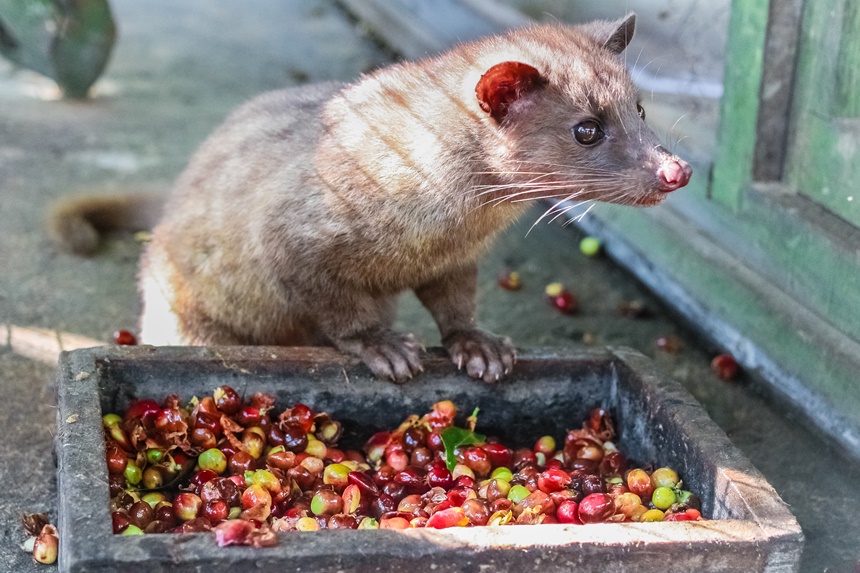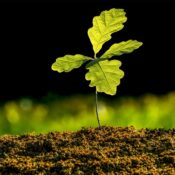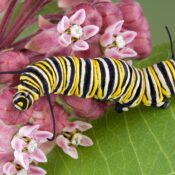Beyond a doubt, within the next 500 years, Earth will get smacked by another geomagnetic storm as big as the 1859 Carrington event. Experts believe it’ll knock out power grids, the Internet, and cellphones for a period of several weeks to a few years. If it happens tomorrow, my biggest fear might be running out of coffee. I can do without lights for a while, but I need that morning caffeine fix.
While caffeine is found in over 60 plant species, Americans unite behind coffee, quaffing some 188.7 billion cups each year, and making the U.S. the biggest coffee consumer in the world. But when it comes to per-person guzzling, we’re not even in the top ten. The good people of Iceland, Canada, and Nordic countries drink far more than we do. It makes sense they want lots of joe where it’s frigid, as caffeine has a thermogenic, or heat-producing effect.
Worldwide, tea is the most popular caffeinated beverage, but here, it comes in a distant second – we go through a “mere” 85 billion or so cups annually. We also get caffeine from cacao pods, kola nuts, yerba maté, and guarana berries.
Doctors use caffeine to treat migraines, and apnea in newborns (likely just a Starbucks Short for infants I’m guessing). It’s sometimes used to treat obesity, as studies have shown it helps burn fat.
Among caffeine’s perks is that it improves physical and mental performance, kick-starting cyclic adenosine monophosphate or AMP, a key messenger that amps-up cellular activities. In addition, levels of brain dopamine, a “feel-good” chemical that floods our noggins when we’re in love, rise. Effects (of caffeine, not of being in love) last 3-5 hours, and diminish over time with regular use as we habituate to the drug.
Just as we aren’t the only animals that indulge in alcohol or other mood-altering substances on occasion, the natural world has its share of customers looking for a pick-me-up. Following a caffeine jolt, non-human animals learn faster and become more active just as we do, but they vary widely in how sensitive they are to this compound. Above a minute dose, caffeine is toxic to dogs, cats, and many other pets, as domestic animals generally do not have the liver enzymes to metabolize it well. Symptoms of caffeine toxicity in pets include tremor, diarrhea, vomiting, and seizures. If you think your pet has ingested some, contact a veterinarian right away.
And yet, a range of wild critters actively seek it out. On one hand, this seems odd. Like nicotine, caffeine is a bitter molecule made by plants to kill insect pests and deter herbivores from browsing on the leaves. Viewed from another angle, it makes sense: If your daily grind is either chasing after stuff you’d like to eat or running away from things that want you for dinner, you need a competitive edge.
The sweet, mildly caffeinated fruits of coffee plants are magnets for hungry creatures. Wild things that nosh them include Central American fruit bats. These dainty diners lick away the outer pulp, leaving bare coffee pits, or beans. Rhesus monkeys and rock macaques are keen for coffee cherries, too, though less careful. They stuff their mouths, chew a while, and then spit the marginally cleaned seeds.
The Asian palm civet, a sleek little omnivore from South Asia, eats coffee cherries whole. So many, in fact, that coffee growers tried to kill them, until it was discovered the slightly used coffee beans found in civet poop are worth about $600 a pound. The white-browed guan, often called a Jacu bird, is native to northeastern Brazil. This pheasant-like bird likewise gobbles coffee fruit whole. It eats fewer than civets, as it is increasingly scarce thanks to Brazil’s feverish push to destroy its rainforests.

Of course, it’s not all about coffee. Jane Goodall reported seeing chimpanzees dine on caffeine-rich kola nuts. And although tea plants don’t offer yummy fruit, deer are known to munch the leaves.
It turns out bees like a good buzz, too. Both citrus and coffee flowers serve nectar laced with caffeine to their pollinator guests that drop by. When a bee visits a caffeinated citrus bloom, for example, the bee is way more likely to keep coming back to citrus flowers above all others.

That’s great for citrus and coffee fields, but farmers don’t have the same “caffeine advantage” for their other crops in need of pollination. Well, a breakthrough in 2021 might be the answer. Using caffeine as a reward, researchers were able to train bumblebees to favor a given type of flower (growers rent bumblebee colonies like they do with honey bees).
Biologists gave bees a caffeinated sugar solution tagged with a floral scent at the bumblebee nest, and let them feed a while so they’d associate caffeine with the aroma. When the bees went to forage afterward, they sought flowers with the same smell (in this case, strawberry blossoms), pollinating them in greater numbers than non-crop flowers.
Bees may profit from caffeine beyond its buzz. Studies show that it helps protect honey bees against diseases so they live longer. In a probably unrelated study, it seems coffee drinkers may have a decreased mortality risk. All the more reason not to quit coffee, I say.
Become a Saturday Evening Post member and enjoy unlimited access. Subscribe now




Comments
Animals and bees getting buzzed on caffeine comes as more of a surprise than their seeking out the right leaves, berries and more to get high. Non-human animals have more common sense (and arguably basic intelligence) than most people now, so I’d trust their judgement on what’s the best and safest amounts they should consume.
They have a lot of work to do we don’t realize, and apparently the caffeine is quite helpful or they wouldn’t seek it out like they do. Of course, there’s he benefit of (say) giving deer the ability to move quickly out of danger as needed. Whether non-humans get addicted to caffeine, I’m not sure. People definitely do, and seem to be using coffee more than ever as a substitute for sleep which Americans don’t respect or get enough of.
It’s a vicious cycle, Paul. Constant caffeine throughout the day makes it difficult to sleep, or maybe just get ‘lite’ sleep which isn’t real sleep. The coffee studies seem to go back and forth on the decreased mortality findings. It may be who’s doing the studies. If it’s the coffee companies behind it, than of course the results will go toward decreased more than an independent source would. Lack of sleep will definitely increase mortality rates sooner.